All fighting birds are difficult to photograph well but fighting Snowy Egrets are harder than most.
Four days ago, on the morning Farmington Bay WMA opened up again for the season, I ended up spending most of my time with Snowy Egrets. They were feeling unusually feisty, even for Snowy Egrets, so my primary goal was to get some decent fighting shots.
Easier said than done.
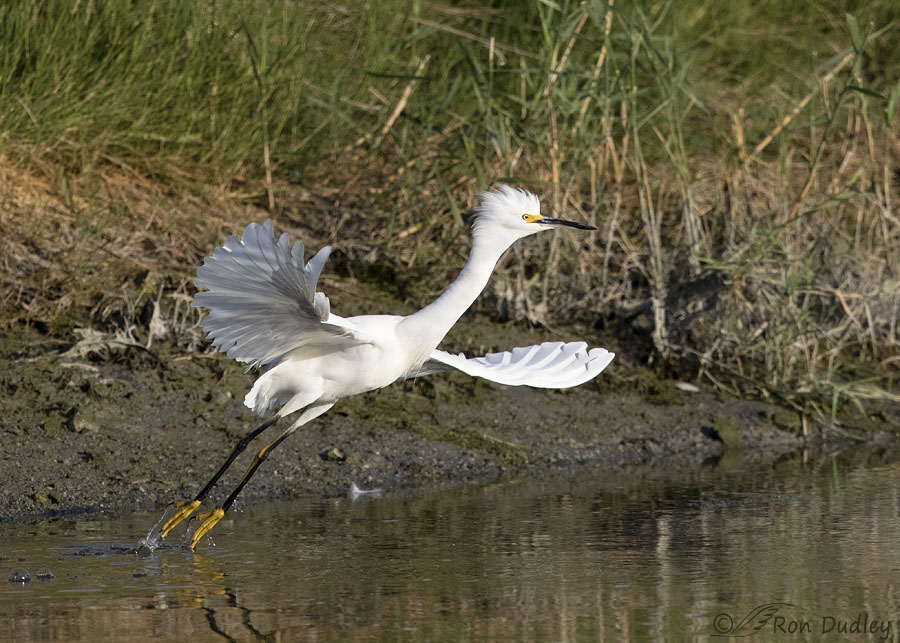
When one egret would launch to attack another one not far away there was often only one bird in the frame. To me it isn’t a fighting shot if you can’t see both birds involved.
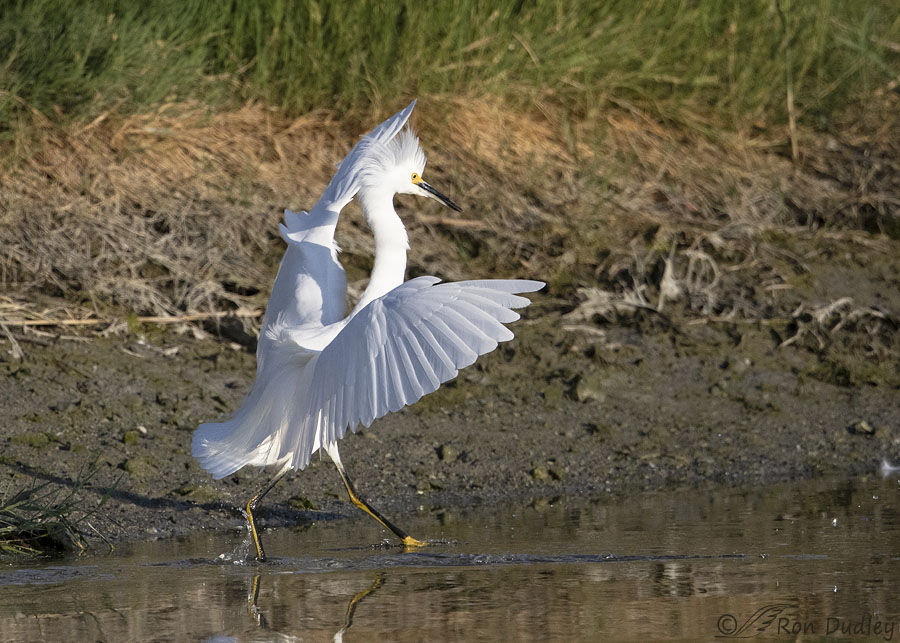
The same thing was true with several interesting threat postures I captured. I really like this pose but the egret the threat is directed at is out of frame to the right so you can’t be sure if it’s a threat posture or if the bird has just landed (I believe the former is true).
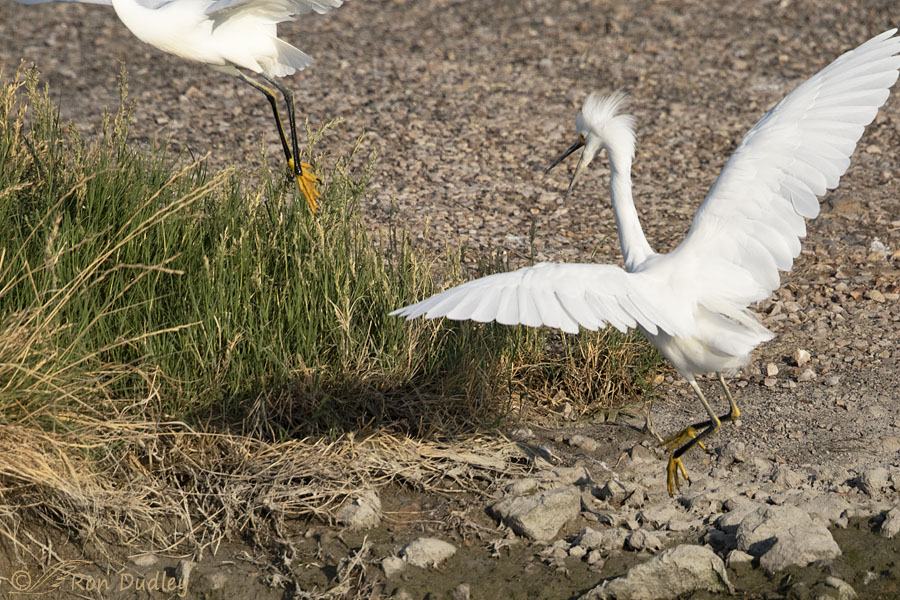
But the biggest problem is getting both birds in the frame without clipping any body parts and getting both of them sharp. This photo is uncropped but even so both participants have amputated body parts and the bird in the foreground is soft..
I was firing a burst when I took this photo and in the next shot I took…
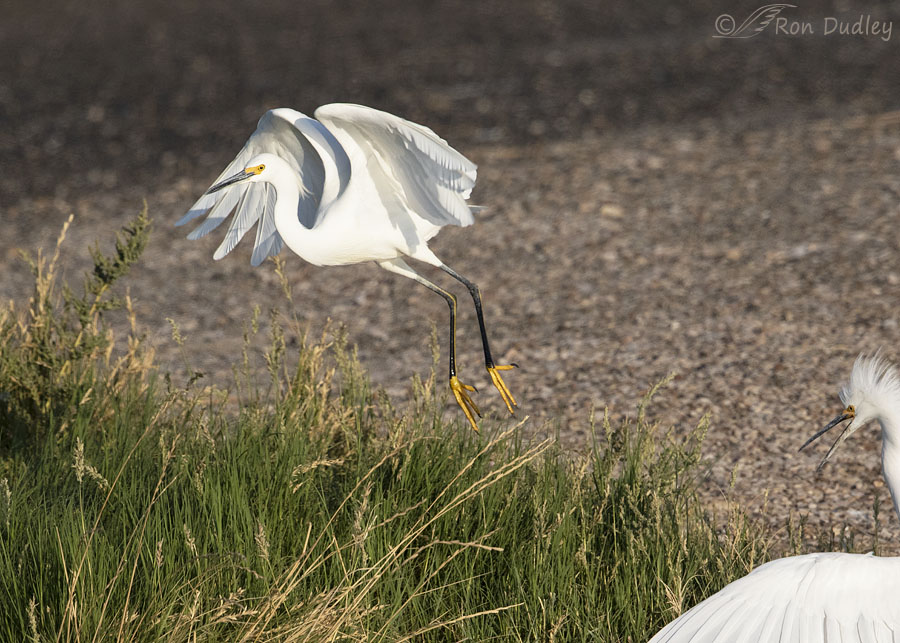
I got the bird in the background sharp but very little of its antagonist was in the frame. To me this isn’t an acceptable fighting shot so the only option I had with it was to…
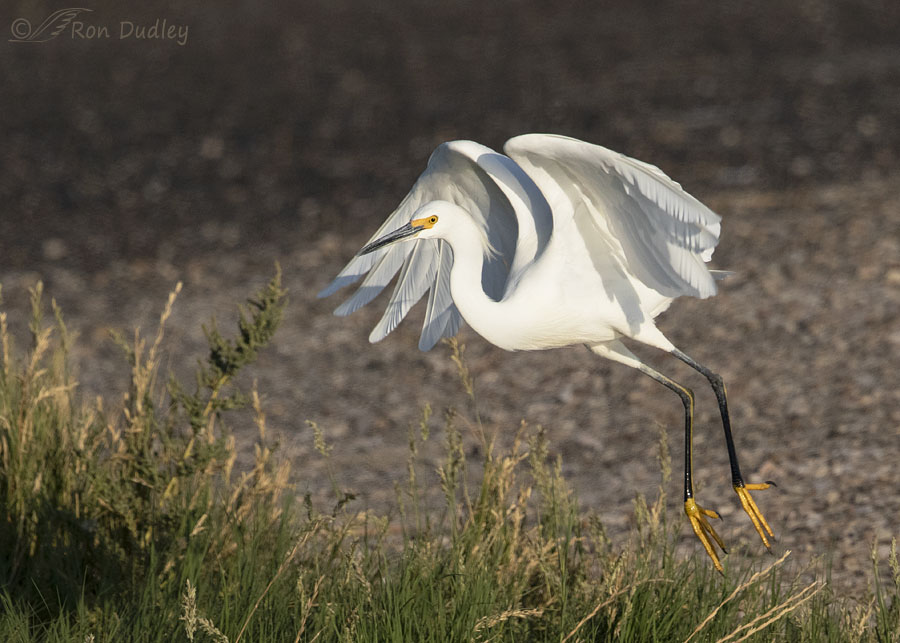
crop the photo to feature only the egret that was fully in frame. But cropping this way you’d never know there was any skirmishing involved. It just looks like a normal, everyday takeoff shot.
Things like this happened again and again that morning. Only rarely did I get any photos that I considered successful fighting shots. The following series of three consecutive photos in a burst is about as close as I came.
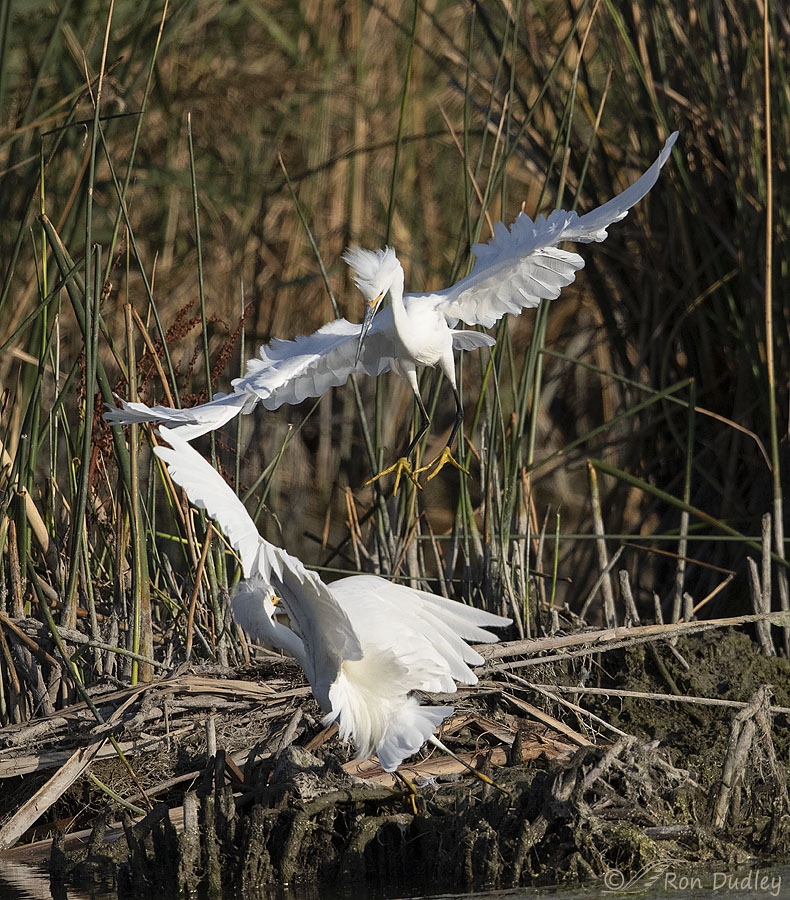
The egret at bottom was minding its own business when the incoming bird appeared at the top of the frame so I laid in my shutter button and got three photos with no body parts clipped and both birds acceptably sharp.
I really like the way the incoming bird’s primary feathers have been ruffled in two directions, up and down.
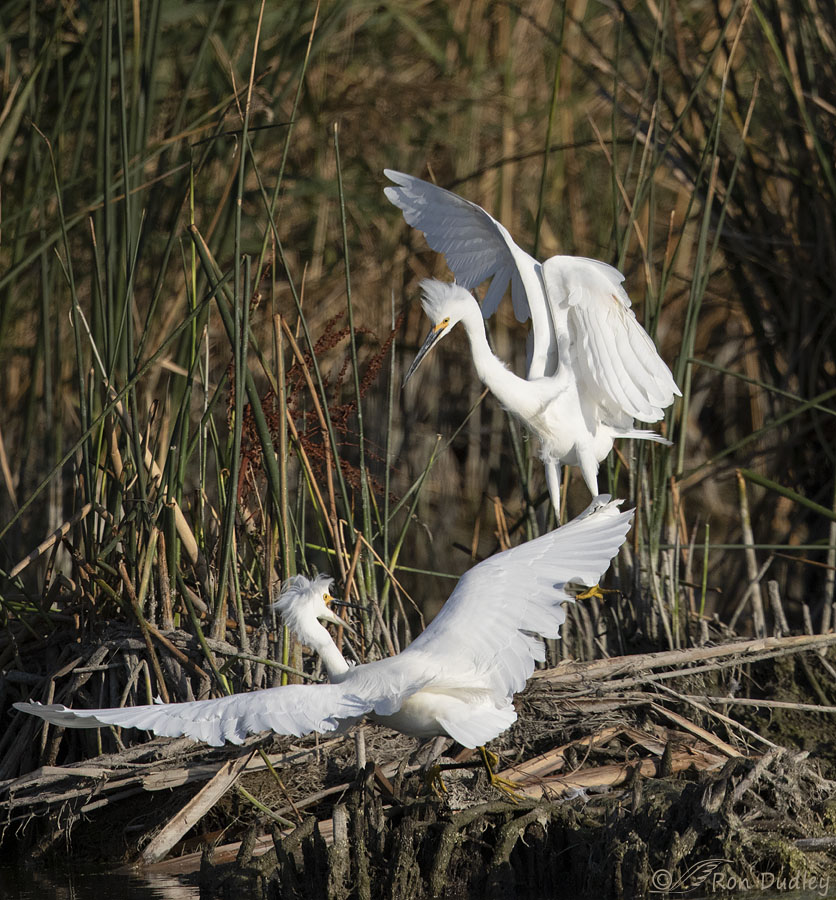
In this shot the posture of the bird at bottom suggests that I captured the precise moment when it was trying to decide if it should fight or flee.
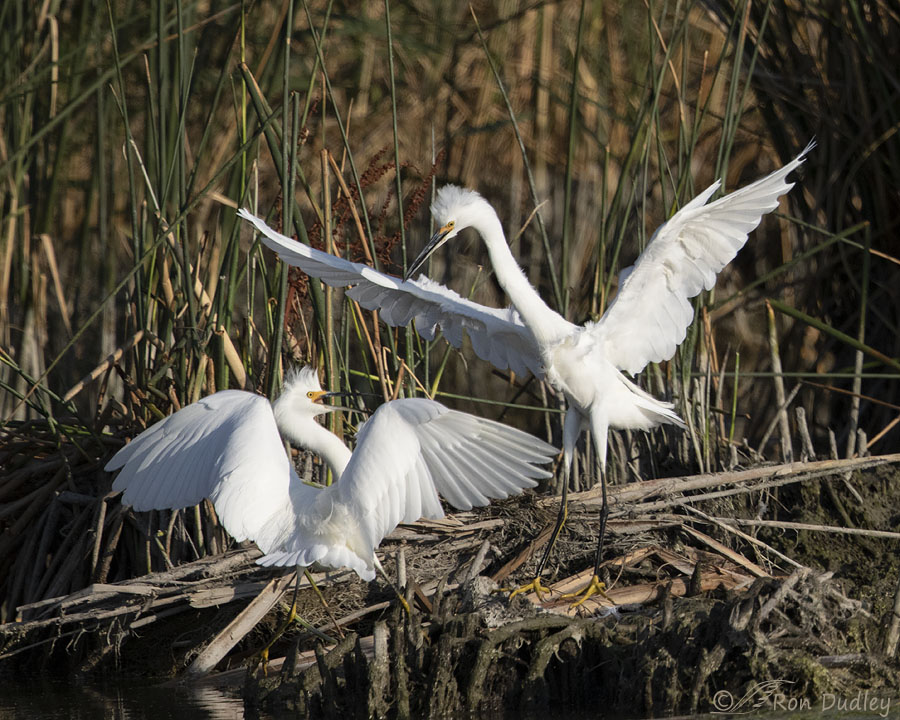
It decided to stand its ground. This may be my favorite of the three photos but I think all of them succeeded to some degree.
So, in my introduction I said that all species of birds are difficult to photograph well when they’re fighting but Snowy Egrets are more challenging than most. What makes Snowy Egrets so hard?
It’s their incredibly tough exposure! Virtually every feather on their body is pure white – not just plain old white but glaring bright white. They’re called Snowy Egrets for good reason. Avoiding blowing out those whites is hard enough but getting any detail in them is even more difficult. It hurts, it really does, to get an otherwise spectacular action shot but the whites are so poorly exposed I have no real option but to trash the photo.
That my friends is what it’s like to try to photograph fighting Snowy Egrets. But damn, is it ever fun..
Ron


I’m enjoying all of these but I find #4 and 5 to be especially intriguing because to me, the shadows cast by the wings give the image a sense of being done in watercolor (that’s my medium though I’m not very good at it).
The Snowy Egret is about as common as hen’s teeth here (two submissions to ebird in 20 years), so it doesn’t look like I’ll have any of your exposure challenges😁
I’m not an expert photographer by any means, but I’m impressed with the feather detail while maintaining good detail of the surroundings.
I noticed you don’t have exposure settings on today’s post or from the other day.
Lyle, I don’t remember about “the other day” but for these photos I left them off deliberately because they were poorly chosen. I took a long time to check my settings and when I finally did they were inappropriate for the situation – ISO too high resulting in crazy high shutter speeds, even for me. Not a good example to set for my readers…
Ron – These photos today complete the story you started last Friday when you showed us Angry Bird attacking shadows. Maybe not the same two birds, but photos 3 and 4 give us a great idea of what that shadow was doing. Not being a photographer, I can’t appreciate the technical difficulties you face with these birds, but I certainly can appreciate the results. Thanks for the great stories you tell (literal and visual)!
I enjoyed your comment very much, Carolyn. Not only for what you said, but for how well you said it.
Excellent series Ron, thanks for sharing!
Charlotte Norton
Thanks, Charlotte.
For some of us (me) almost all birds are difficult to photograph well, regardless of their colour or mood. I am also pretty certain that if I was fortunate even to see some of the scenarios you capture I would just be standing there, watching, in awe and wonder.
Which is part of the reason I start my mornings here, with my jaw swinging.
Thanks Ron. Again.
“with my jaw swinging”
That brought a smile, EC. I’ve said it before, you do have a way with words.
Wonderful photos – I especially liked the cropped one of the egret flying away.
An embarrasing story of me photographing snow egrets. This spring I was processing some photos that I’d taken a week earlier and I noticed several photos with two egrets close to each other – standing and jumping around. I couldn’t recall taking any photos like that, and after analyzing them I realized that they were actually double exposures – I had inadvertently selected that option instead of my intention just take continuous photos. They were interesting though!
Thanks, Kent. I think things similar to that happen to all of us occasionally. Just this morning I was photographing birds for I don’t know how long when I noticed my aperture setting had somehow been changed to f/9, which of course slowed my shutter speed considerably. I’m dreading looking at the results…
Thanks for the background details re challenges with these subjects. Stunning photos and I enjoy your comments about each photo. Amazing birds. I’ve been told my hair stands up like that when I’m in attack mode. 😉
Kathryn, my hair used to stand up in that situation too. Back when I had hair…l
OMGosh how fun! The 6th shot with the feathers blowing amok is my fav! Excellent detail Ron – thx for explaining the technical difficulties shooting bright white.
Thank you, Kathleen.
Ron,
I didn’t think FB was open until the end of September. Once again: a day late… etc. Crap! I need to get out there soon. Love the Egrets.
Stephen
Stephen, as I recall Farmington always opens the gate on the Thursday before the Saturday Youth Hunt.
Feeling unusually feisty for sure. Great work Ron. Getting both into frame and trying to get the white looking good at the same time is well beyond my photo skills. These are really interesting to me because I have never seen Snowy Egrets fight. My only experience with them is seeing them peacefully searching through the shallow waters for food.
Everett, in my experience Snowy Egrets are more mercurial than many birds, going from being peaceful to agitated in a heartbeat. And often.
I have to agree that fight scenes are the most thrilling to witness and difficult to capture for all the reasons you outlined but I have never had to struggle with the exposure of whites as there are very few egrets anywhere near here. Lucky for me I have only had to worry about fights between pheasants, starlings or crows though the last have indeed posed a similar problem of exposure. None of my shots though would rival the beauty of these egret shots of yours for many reasons not least of which is that crows could never compete in beauty pageants. 😉 Thanks for sharing your struggles and your experience.
Granny Pat, as you said pure black birds, like crows, are a very difficult exposure too. I think it helps a lot, with both extremes, to be photographing them in softer morning or late afternoon light. But then, especially with black birds, insufficient shutter speed may be an issue when they’re fighting.
Spectacular! What a wonderful series. It could be a book, sure tells a story. Thank you, Ron
Thanks very much, Mary.
I agree Mary, this post tells a great story! and the photography is pretty great too 🙂
Thanks, Terri.
WOW! Well done in a tough situation! 🙂 Catching the action AND having the exposure “right” to boot! The feather action in the 1st of the 3 with both birds is amazing!
Thanks, Judy. My exposure in some of these shots wasn’t quite “right” out of the camera so thank goodness for Photoshop and shooting in RAW.